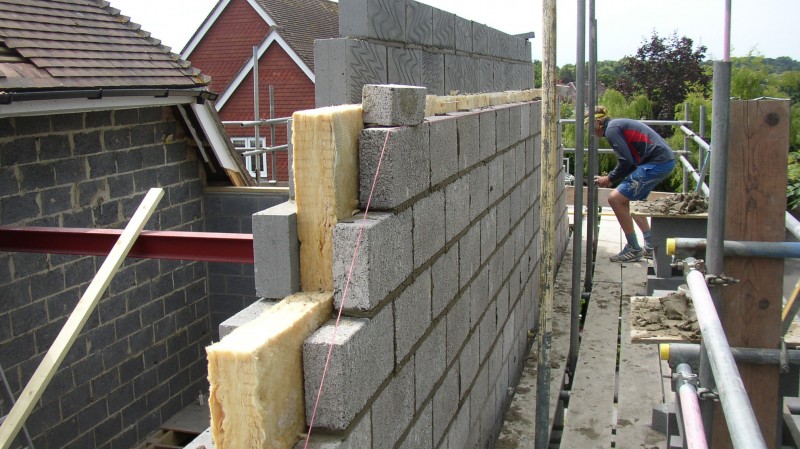You are here: Building Regulations - a case study
Business owner JJ Heath-Caldwell recalls his experience of getting Building Regulations signed-off for his two-storey extension and loft conversion featuring a home office, en suite bedroom, small study & library
Compliance can seem like a tick-box exercise, something JJ is all too aware after the foundations to his two-storey extension were laid without the building control inspector on site to check the work.
“When the inspector turned up a few weeks later, he insisted we knock a hole in the middle of the floor, so he could check it,” said JJ, adding it may have been miscommunication why he wasn’t there on the day the foundations were concreted.
“This seemed daft to me. I had taken lots of photographs, documenting every stage, and it was easy to see that all the steps had been taken correctly. In addition, we were building on chalk and there would never be any risk of flooding.
“In the end, the only way to resolve it was for one of the builders to spend an afternoon breaking out a section of 30cm by 30cm in the middle of my new concrete floor. The inspector turned up, peered into the hole, gave his approval and ticked it off his list. The builder then filled the hole up with new cement and levelled it off.”
Inspectors make several site visits to check home extensions meet Building Regulations. These are statutory national standards aimed at ensuring the health and safely of people in and around the buildings. It’s a legal requirement to notify them of key stages, such as excavation and concreting of foundations.
“Compliance with building regulations is a legal requirement, “said JJ. It’s also common sense as the regulations are there to make sure your builder gets the job right.
“The building needs to be safe and it needs to be structurally sound, so it won’t start to fall down. The responsibility for checking building regulations are met falls to either a council building control service or an approved inspector. In my case, I decided to use the inspector from the council.”

Building Regulations are a necessary part of having an extension built
JJ drew floor plans himself for planning permission, but he needed scaled drawings with technical notes to show they met building control standards for the inspector. So, he hired an architect to produce detailed drawings.
Next, JJ asked a structural engineer to do calculations for structural elements of his home extension. The engineer confirmed he could use innovative aluminium TeleBeams to help the roof truss carry additional loads for the conversion instead of steel beams.
Fire doors are another Building Regulations requirement. Renovated properties with three or more storeys, including loft conversions, must have fire doors in every habitable room off the stairwell. Fire doors are specially constructed to make it difficult for flames and smoke to pass through in the event of a fire.
JJ said: “This meant that most of the existing doors had to be replaced with fire doors. It was very sad to remove eight perfectly good doors and put them in the skip. It was also expensive, as in addition to the cost of labour, fireproof doors cost about £400 per door rather than £100.
JJ managed to sell three doors on eBay for £100 and a woman drove from Brighton to pick up the other five. “It was good to know the doors were going to be reused rather than dumped.”
For new homes and extensions, at least one mains-powered smoke alarm with detectors/alarms should be fitted to each floor. JJ had planned to have one alarm inside and one outside.
“The inspector showed me that if we were in a room on the top floor with the door closed, the alarm was not very loud. Certainly not loud enough to wake up someone who might be asleep in bed. Luckily, it was relatively easy at this stage of the build to run in some more wires and put an alarm sounder on each level.
“All this hassle with fire doors and fire alarms was rather costly and inconvenient but on the plus side my family and I will be a lot safer in the event of a fire.”
In total, the building inspector visited four times. JJ said: “Most things he was happy with and his part in the project was very useful and much appreciated. His presence also helped to keep the builders on their toes although they were all excellent.”
JJ paid £871 to his local planning authority for the building inspector and £1,800 to the architect. The structural engineer, a friend, gave his services free of charge.
If you are looking for help with Building Regulations, you may need help from some of the following experts. Clicking on the links below will instantly give you contact details for Experts in your local area:
Building Regulations
Find details of local experts who can help with Building Regulations
Architectural Design Services
Find local Architectural Design experts
Builders
Find local help with a building project
Building Surveys
I want a local surveyor to do a Building Survey for me
Structural Inspections
Find an expert to carry out a structural inspection

